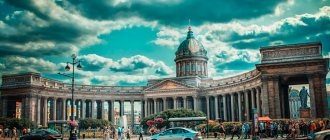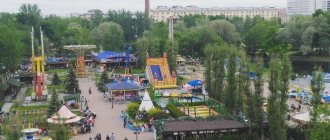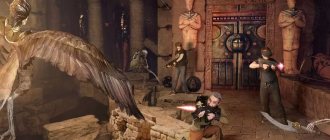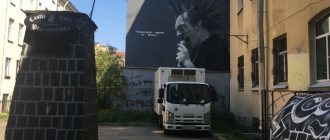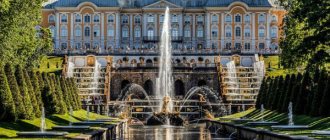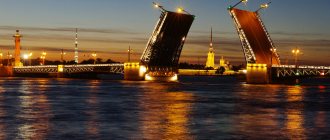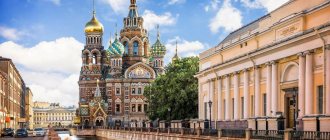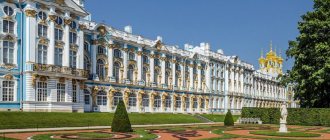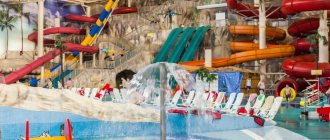What holiday is it today?
09 February 2022, Wednesday
Today are holidays and events: Aeroflot's birthday International Dentist Day Memorable date in Russian military history: The feat of the cruiser Varyag Tomorrow: Diplomat's Day
Today is an Orthodox holiday: Transfer of the relics of St. John Chrysostom, Archbishop of Constantinople... Tomorrow: St. Ephraim the Syrian. Venerable Ephraim of Novotorzhsky. Venerable Ephraim of Pechersk, Bishop of Pereyaslavl. Venerable Theodosius of Totem, the head and founder of the Spasosumorin monastery...
Today is a national holiday: Chrysostom's Fire... Tomorrow: Ephraim's Day...
Founding history
The beginning of the 18th century for Russia was marked by the events of the Northern War with the Swedes, during which the Swedish fortress of Nyenschanz was captured. To consolidate this small victory, Tsar Peter decided to found a new city on the Baltic coast next to the fortress. A suitable location was found on Hare Island at the mouth of the Neva. The founding of St. Petersburg took place on May 16 (27), 1703.
Seasons
Seasons, four periods of the year (spring, summer, autumn and winter) characterized by certain average temperatures. The period during which the Sun passes through one of these sectors is called the season. Spring in the Northern Hemisphere and autumn in the Southern Hemisphere begin when the Sun passes through the initial circle of declination and its right ascension is 0° (vernal equinox). Summer in the Northern Hemisphere and winter in the Southern Hemisphere occur when the sun's right ascension is 90° (summer solstice). Autumn in the Northern Hemisphere and spring in the Southern Hemisphere begin when the sun's right ascension is 180° (autumnal equinox). The beginning of winter in the Northern Hemisphere and summer in the Southern Hemisphere is considered to be the winter solstice, when the direct ascension of the Sun is 270°... Next: Seasons. Russian folk calendar. Monthly words...
Kolpinsky district
This is one of the largest districts of St. Petersburg. Its area is 105.8 km². However, less than 200,000 people live in such a large area. This is a suburb of St. Petersburg. There are no metro stations and the public transport network is poorly developed. Despite the fact that the M-10 federal highway passes through the area, traffic jams are almost constant here.
The environment is bad. This is an industrial zone where there are about 30 large enterprises. At first, houses in the Kolpino region were built for factory employees. Then little-known construction companies came here, some of which turned out to be scammers. But recently, modern new buildings have begun to appear in the area, and apartments are actively being sold. Real estate is cheap. St. Petersburg residents do not want to move here, although the social infrastructure here is quite well developed.
Folk calendar about every day
Every day one season always replaces another and this determines a person’s way of life. In connection with this, a folk calendar was formed in which there were practically no nameless, unmarked days. Every day was special, had its own purpose. All this was determined by climate conditions and astrological phenomena.
A calendar is a system for counting periods of time. The first calendars arose a long time ago, in ancient times, because there was a need to measure time. The word calendar comes from the Latin words caleo - to proclaim and calendarium - debt book. This is due to the fact that in Ancient Rome the beginning of each month was especially proclaimed, and because it was customary to pay debts on the first day of the month. Different peoples counted time differently. Some calendars are based on the changing phases of the moon - lunar calendars; in others - the change of seasons - sunny; in others, the length of the year was coordinated with the change of seasons, and the counting of months was associated with the phases of the Moon. Such calendars are called lunisolar.
In Rus', the calendar was called a monthly calendar. Every day, the month book covered the entire year of peasant life, “describing” day by day, month after month, where each day had its own holidays or weekdays, customs and superstitions, traditions and rituals, natural signs and phenomena. The cyclical nature of the calendar is reminiscent of human life, where spring is youth, summer is heyday, autumn is the time of harvesting fruits (it’s good if there are some, otherwise you can live your life without collecting fruits), winter is the time of wisdom and peace. This cyclicality and rhythm determined the way of life of the farmer. The folk calendar was an agricultural calendar, which was reflected in the names of the months, folk signs, rituals and customs. Even the determination of the timing and duration of the seasons is associated with real climatic conditions. Hence the discrepancy between the names of the months in different areas... Next: Folk calendar...
Pushkinsky district
It is located in the southeast of St. Petersburg, its area is almost 240 km². It ranks second in terms of territory size. About 220,000 people live here.
The area is suburban, located outside the ring road. There are few industries here and there are no environmental problems. There are many parks, squares, green corners. It's quiet, calm, cozy here.
Until recently, there was only prestigious real estate here - old houses near parks, expensive cottages. But now economy-class neighborhoods are being built, the apartments there are quite affordable.
There are several universities, technical schools, many schools and kindergartens.
There is one metro station built here, but most residents and tourists prefer to travel by train. In summer there are often traffic jams due to the large number of vacationers.
People mainly come here to visit Tsarskoye Selo and Pavlovsk.
Tsarskoye Selo is located in the Pushkinsky district
Fishing calendar for every day
The fishing calendar should not be taken as an absolutely indisputable truth. Fish biting is greatly influenced by a whole range of natural factors, as well as the influence on the nature of man himself. You must not forget that the fish’s bite depends and is determined not only by the calendar dates and biological cycles of their life, reflected in the calendar, but also, no less, by the state of their habitat; the bite also depends on weather conditions: air and water temperatures, cloudiness, wind direction and strength, etc... Next: Fishing calendar...
Kirovsky district
Over 300,000 people live here on an area of 48 km². The area has a favorable location in the north-west of St. Petersburg - on the shores of the Gulf of Finland. However, the entire shore is occupied by industrial enterprises, so you won’t be able to live with a view of the water. There is a poor environmental situation here, heavy gas pollution, dirty water. The area is one of the dirtiest areas in the city.
Transport accessibility is not satisfactory:
- 5 metro stations;
- Railway;
- several wide highways.
The housing stock is heterogeneous - there are both old dilapidated houses and modern buildings. Apartments in the Kirovsky district are cheaper than in neighboring districts, since it is considered an industrial zone.
The infrastructure is developed. There are many shops, canteens and cafes, dozens of educational institutions, including several private schools.
Tourists rarely come here, but there are a couple of interesting monuments and memorials. For example, the Narva Triumphal Gate.
The main attraction of the Kirov region is the Narva Triumphal Gate
Orthodox calendar about every day
Orthodox calendar: Orthodox, Church and Christian holidays.
The church year is an alternation of weekdays and holidays. On weekdays, a person is called to work “by the sweat of his brow to earn his bread.” Holidays are given in order to feel liberation, to rise above the bustle and routine of the world, to feel involved in the highest of worlds, “where there are no illnesses, sorrows and sighs, but endless life.” Since ancient times, holiday cycles have been associated with the seasons. The pagans associated them with the worship of the forces of nature, the cult of which in the Old Testament was replaced by gratitude to the Creator for the universe. And although the connection between holidays and the seasons has not completely lost its power, since God is present in everything, in the plant and animal world, in human works, it nevertheless faded into the background, giving way to a spiritual foundation built on the Sacred Scriptures. The history of Orthodox holidays dates back to the times of the Old Testament. Each of the Orthodox holidays is dedicated to the remembrance of the most important events in the life of Jesus Christ and the Mother of God, as well as the memory of saints... Next: Orthodox calendar...
Vasileostrovsky district
Another central area of St. Petersburg beloved by tourists. It is located on three islands, the total area of which is 21 km². The population is about 200,000 people. Vacationers stay here for the attractions and proximity to the center - you can walk to Nevsky Prospekt.
But the locals don’t like to live here - there are many problems with transport. The islands are connected to the rest of the city by four bridges. Until 2016, during the construction of bridges from the Vasileostrovsky district, it was impossible to go anywhere by land transport. But after the opening of the WHSD section, the situation was resolved, and there were fewer traffic jams.
There are also metro stations built here, but their capacity is not enough; there are always a lot of people in the metro.
But real estate is still expensive. The area is built up with old housing stock, new panel buildings, and elite residential areas.
Vasileostrovsky district is located on three islands
THIS IS INTERESTING. Vasileostrovsky district is one of the oldest in St. Petersburg, it was founded in 1917.
Russian folk calendar for every day
The word “sign” comes from the word “notice”, i.e. observe. As a result of observing what happens around a person every day, he accumulates life experience. This knowledge was passed down from generation to generation, carefully preserved and people trusted it as a sacred book. Many signs have come to us from the depths of centuries without losing their knowledge. Each of us is free to choose: to dismiss all this as an absurd superstition or to take a closer look at the signs and take the centuries-old experience of generations more seriously. Most of us, when taking exams, ask them to scold them, boasting about some kind of good fortune or luck, spit so as not to jinx them or knock on wood, take a detour if a black cat crossed the road, are afraid of the number 13 and much more. And who among us does not have lucky things, numbers? Who has never resorted to the help of fate at least once in their life, who has not believed in secrets? It’s as if everything connected with signs is hidden somewhere deep in our subconscious. Often we remember them mechanically, unconsciously, or just as a joke. But, undoubtedly, the signs contain a lot of accurate knowledge and practical wisdom of our ancestors. They cover all the characteristic, often difficult to perceive, natural phenomena. Signs have preserved a lot of what was in old folk holidays and customs; they help predict the weather, grow crops... Next: Folk signs...
Saint Petersburg
The vast territory of St. Petersburg includes not only the city itself, but also suburban areas - Pushkinsky, Petrodvortsovy, Kolpinsky, Krasnoselsky, Kronstadt, Kurortny. It is clear that in order to develop such areas, transport in the city must be very developed. It includes municipal transport (metro, tram, trolleybus, bus, electric bus) and private (taxi, shuttle buses, Chizhik tram).
Metro
The metro in St. Petersburg is the second largest in the country, but, unfortunately, it has not satisfied the needs of citizens and guests for a long time. For a long time, the official name of one of its stations was: “Station “Ploshchad Lenina” of the Leningrad Order of Lenin Metro named after Lenin.”
Today it has 5 lines and 72 stations. The total length of the tracks is about 125 kilometers. More than 750 million passengers use the metro every year. It is the deepest in the world. It includes the Avtovo station, which is one of the ten most beautiful stations in the world, and Admiralteyskaya, one of the deepest in the world (depth 86 meters). At the exit from the Sportivnaya station towards Vasilievsky Island there is a horizontal escalator (travelator) with a length of more than 300 meters and a height difference of 10 meters.
St. Petersburg metro map. Source ©, persons. CC BY-SA 3.0
The metro operates from 5.30 am to 1 am, but many stations have their own schedule. In the period from April 30 to November 15, on the stretch between the Admiralteyskaya and Sportivnaya stations, trains run until 3 a.m., which allows tourists living on the Petrogradskaya Side and Vasilyevsky Island not to wait until the morning at the raised bridges. On some national holidays, as well as during the Night of Museums, City Day and the Scarlet Sails holiday, the metro operates around the clock.
Zenit station (formerly Novokrestovskaya)
© A.Savin
The St. Petersburg metro is also distinguished by two rare types of stations - closed type (12 of them) and single-vaulted (15 of them). At the first, the platform is separated from the tracks by a system of automatic doors that open along with the doors of the arriving train. This design gave rise to legends that in this way the stations are protected from floods. This, of course, is not true, because on some stretches the depth of the tunnels is more than 100 meters. Where can water seep in there? It’s just that during their construction, they finally abandoned the “underground palaces” and began to save a lot.
Payment for travel is made with disposable tokens, bank cards (not everywhere) or reusable travel cards and numerous types of cards. Traveling through them is much cheaper. The most convenient and most profitable option is the Podorozhnik card, which can be used as an “electronic wallet” or as a single travel card for 1–7 days.
All stations (but not yet the tunnels) have mobile phone coverage from the four major operators and Internet access via Wi-Fi.
Unfortunately, it is very difficult for disabled people to use the subway on their own, but for them there is a support service whose employees can be called by phone indicated on special signs at the entrance to any station.
You can take photographs on the subway, but without flash.
Despite its shortcomings, the metro is the most convenient and comfortable form of urban transport, if only because it is warm in the cold winter and cool in the hot summer.
Buses
The bus network is most developed in the city and suburbs. The center mainly uses large, low-floor machines.
Bus in the center of St. Petersburg during the 2018 World Cup
© Tatiana Dudarenko
An important addition to them is a network of minibuses, which run much more often, but use small buses with 20–40 seats. They are also the main carriers from the city to the suburbs. However, along the entire length of Nevsky Prospekt, the main transport artery of the city, the movement of minibuses is prohibited.
Many cars are equipped with a video system that displays the route, the name of the stops, the distance between them, as well as weather forecasts and the exact time. Information about the route is duplicated by announcements of stops, and in the city center also in English.
Since 2016, a special project “Cultural Route” - on buses No. 3, 6, 7, 22, 46 you can listen to audio tours along the route. For an individual tour, you only need a smartphone with headphones and a free application, which is installed using QR codes located in the salons. Excursions are also in Russian and English.
Transport on Anichkov Bridge
© Irina Dementieva
Payment for the fare is made by transport cards or in cash to the conductor, who is also a controller and can check whether you have paid for the fare. On some routes in “dormitory” areas there are no conductors and the driver accepts payment, so exit there is only through the front door. Minibuses also use Podorozhnik travel cards or pay in cash.
For several years now, from mid-spring to mid-autumn, the city has a network of night municipal routes “M”. They operate on the night from Friday to Saturday and from Saturday to Sunday and duplicate metro lines, following them.
Thus, these days, even in their “sleeping” area, you can get to the Neva at night, look at the bridges being drawn and return home without waiting for the metro stations to open.
Trolleybuses
The most environmentally friendly form of transport. Recently, their route network began to be supplemented by electric buses - this is the same trolleybus that travels part of the way on wires, and where they do not yet exist, on batteries, like a bus. That’s why there are a lot of them now in areas of new buildings. These are also modern low-floor cars with sockets for USB ports, through which you can recharge gadgets for free. Only conductors accept cash payments, and all types of travel tickets are also applicable.
Trams
Trams at the Museum of Urban Electric Transport
© dualia1
Until recently, the tram was one of the symbols of the city and was widespread. However, the lack of progress in the production of new cars and the old track network have led to their merciless reduction, especially in the city center.
But for a long time, the tram interchange at the intersection of Sredny Prospekt of Vasilievsky Island and lines 8-9 was the most complex in the world - there a tram from any direction could turn into the other three.
Now the tram network is developing in areas of new buildings, on dedicated lanes.
For them, new, modern low-floor trains are being created that operate on the “shuttle” principle, i.e., with two cabins and exits on both sides.
This led to the appearance of the first private tram, the Chizhik, which travels from the Ladozhsky station to the Krasnogvardeisky district. A completely new type of tram was built especially for this project, the doors open with a button, there are USB and electrical sockets, but there are no conductors - you can pay for the fare with a card or buy a ticket from a machine that accepts coins and bills and gives out change. However, quite often on these routes inspectors enter the carriages.
Taxi
Cable-stayed road bridge across the Neva
© Andrey Panin
Taxi has been developing very vigorously in recent years and has become quite affordable, especially with the advent of budget projects like Yandex or Uber. There are many companies with their own fleet of cars or aggregators that unite private taxi drivers under a single brand. Their main feature is the ability to order a car using a single phone number or on the website (which is cheaper), and the cost of the trip will be announced immediately. However, there is a minimum basic tariff that you will be charged even for 100 meters. They are distinguished by telephone numbers written on the machines in large font.
In this situation, the so-called “bombs” who meet tourists at train stations or at the airport, and even drive around the city with “checkers” and offer payment “by the meter”. But these meters are charged so much that the cost of the trip will be many times higher than with a legal car. Categorically refuse their intrusive offers.
There are no parking lots as such in the city, but a car ordered by phone will pick you up from any address.
An additional form of transport in the city can be considered a network of rental bicycles and scooters. Automated points for issuing and receiving them are scattered throughout the city, especially near metro stations. To use them, you need to register on the website and pay for the service there - hourly or for several hours or even days. They are especially popular in the summer for night walks around the city center. However, there are practically no full-fledged bicycle paths in the city.
Conventionally, vehicles can also include carriages, pedicabs and segways , rides on which are offered to tourists in the area of Nevsky Prospekt and Palace Square.
More details: Transport of St. Petersburg
Tips about transport
Holiday calendar, dates and events of the year
All state and professional holidays in Russia, including significant World and International holidays, and other equally interesting holidays and events about every day.
The holiday has always kept pace with the history of mankind. Social time can be divided into three types: everyday life (weekdays), weekends and holidays. Everyday life is a series of practices repeated day after day and every day (work). Weekends are regular breaks from the rush of everyday life. It is believed that on weekends a person should restore his strength after working days. Day off, non-working day. A holiday is a day of celebration established in honor or in memory of someone or something. A day or series of days celebrated by the church in memory of a religious event or saint... Next: Calendar...
central District
It occupies a small area, only 17 km². Over 200,000 people live here. This is the historical center of the city, most of the buildings were built before 1917. There are many emergency and dilapidated buildings here, but real estate is still expensive. Especially those apartments that are located in the “golden triangle” - between the Neva, Fontanka, Admiralteysky Prospekt and Gorokhovaya Street. Apartments with a view of the Moika River are also highly valued.
Apartments with a view of the Moika in the Central district of St. Petersburg are expensive
The main attractions of the city are concentrated in this area.
- Nevsky Avenue.
- Singer's house.
- Admiralty.
- Kazan Cathedral.
Tourists prefer to stay here, so there are many hostels and mini-hotels located in the houses. There are cafes, canteens, restaurants, grocery stores, and souvenir shops.
Administrative and government buildings were built in the Central region.
11 metro stations are open, buses, trolleybuses, trams, and minibuses operate. Due to ground transport during rush hour, traffic jams form for many hours on the roads.
There are few trees, and the air is heavily polluted due to automobile fumes.
Prayer book, Orthodox prayers for every day
Prayer is the most powerful means for healing all illnesses - both physical and mental. Prayers can be laudatory or grateful, petitionary and repentant. If we have offended God, sinned, we must ask Him for forgiveness, that is, repent. Such prayers are called repentant prayers. If everything is fine with us, if we and our loved ones are healthy and prosperous, if we have a place to live, something to wear, something to eat, we must glorify and thank God for this. Such prayers are called praise or thanksgiving. If some misfortune, illness, trouble or need happens, you need to ask God for help. Such prayers are called petitionary... Next: Orthodox prayers...
Resort area
It occupies a significant area of the coast of the Gulf of Finland - 267 km². However, slightly less than 80,000 St. Petersburg residents live here.
The point is expensive real estate - you can compare the Kurortny district with Moscow Rublyovka. This is a suburb of St. Petersburg with elite cottages. But there is also construction of multi-storey buildings with cheaper apartments.
The infrastructure is at a high level - there are shopping centers, shops, cafes and restaurants, gyms and beauty salons. There are many sanatoriums and health centers. There are good, well-maintained beaches.
The area is very green; 80% of all forest parks in St. Petersburg are located on its territory. This is an ecologically clean place with pine trees.
One of the beaches in the Kurortny district
There is no metro here, but the transport links are good and you can get to the city center without any difficulties. A railway has been laid and high-speed trains are running.
Zodiac, astrological, eastern calendar. Zodiac signs
In ancient times, to establish the calendar, priests used knowledge of the positions of all the planets. Before the reform of Peter 1, the New Year was celebrated on the Day of the Autumn Equinox. On this day, according to ancient legend, the most peaceful treaty was concluded between the Great Race (ancient Slavs) and the Great Dragon (ancient Chinese) and it was approximately 7518 years ago... For the ancient Slavs, the calendar month corresponded to the lunar cycle from new moon to new moon, taking into account such Thus, the relationship of the entire annual cycle with astronomical and natural phenomena. There was no coherent calendar system. The main natural phenomena are still considered to this day to be the days of the solar equinox and solstice - the Slavic holidays Maslenitsa, Kupala, Ovsen and Kolyada. But during the time of Peter 1, all ancient Slavic calendars were abolished and a new Western European calendar from the Nativity of Christ (Julian calendar) was introduced, while the beginning of the calendar was moved to January 1. The Julian calendar (old style) did not take leap days into account and accumulated one extra day every 128 years. After the October Revolution in 1918, the Gregorian calendar (new style) was introduced in Russia, according to which an amendment of 13 days was introduced. The calendar of the ancient Slavs was based on two planets: the Sun and the Moon. And now they don’t use anything at all. The calendar has become static. There is no such thing as the calendar, it turns out, resting on some planet. Nobody even knows about it. There are just some standard numbers, there are months and holidays. The calendar is based on the Sun and Moon. Why is this so? Because these two luminaries influence the Earth. The Earth revolves around the Sun, and the Moon revolves around the Earth. And these two luminaries create the atmosphere on the planet. From here the calendar is built... Next: Astrological calendar...
Vyborg district
This is one of the largest districts of the city, the territory size is 115.4 km², the population is almost 500,000 people. The area is located on the right bank of the Neva, in the central part of the city. Divided into two parts - residential and industrial. The environmental situation leaves much to be desired - there are a lot of emissions from different enterprises. But the authorities are trying to compensate for the pollution - they are organizing green areas, public gardens, and parks.
The area is relatively young, there are no problems with infrastructure - there are many shops, shopping centers, schools, kindergartens, hospitals.
Modern business centers and office buildings have been built.
Transport accessibility is provided by 6 metro stations and highways. Lots of public transport stops.
The real estate is represented by old houses, Khrushchev-era buildings in the center and elite residential areas, new buildings in the outlying areas.
Dream books online, interpretation of dreams
A dream book is nothing more than an interpreter of dreams and dreams, a translator of dreams. Since ancient times, people have been using dream books; dreams have always been given great importance, and people have often noticed the prophetic properties of some dreams. The dream book can become your faithful assistant every day and throughout your life, thanks to the dream interpreter you can always make the right decisions, the dream book will help you resist temptations in time, and will warn you against wrong steps and frivolous actions. Further…
Attractions
It is impossible to imagine this unique city without famous architectural monuments and sculptures. The Kazan Cathedral, Palace Square, the Bronze Horseman and the architectural pearls of the suburbs are known all over the world. The palace complexes of Northern Palmyra deserve great attention.
Palaces
For a significant part of its history, the city was the center of high society life in Russia. The unique palace complexes are the front façade of Northern Venice.
Winter Palace
It is difficult to imagine St. Petersburg without the Winter Palace - a symbol of the grandeur and splendor of imperial power. For almost a century and a half, the official residence of Russian monarchs was located here. Currently, the palace is part of the museum complex of the State Hermitage.
The collections of this magnificent museum are protected from rodents by the famous Hermitage cats. The history of their service began more than three centuries ago. Empress Catherine, deciding to follow the example of the city of Kazan, ordered the creation of mousecatcher cats to get rid of rats and mice.
Opening hours: daily from 10:30 to 18:00, except Mondays. Address: Palace Square, 2.
Summer Palace of Peter I
This is one of the oldest buildings in the city. The palace (which more closely resembles a solid house of a wealthy Dutch or German burgher) is located on the territory of the Summer Garden, between the Neva and Fontanka. The apartments of the Tsar himself were set up on the first floor, and his wife Ekaterina Alekseevna’s were on the second floor. The building was used for habitation only from spring to early autumn, so there are thin walls and single frames. The facade is decorated with bas-reliefs dedicated to the events of the Northern War.
The Summer Garden, where the palace is located, is located at Kutuzova embankment, 2. Visiting the palace is possible only in the summer months.
Mariinsky Palace
This is one of the three “political palaces” (along with the Winter and Tauride). It was built in the 40s. XIX century for the daughter of Nicholas I Maria. During the construction of the building, the most modern materials and technologies for the 19th century were used.
After the death of Maria Nikolaevna, the palace was transferred to the state. Meetings of the city Legislative Assembly are held here.
The palace can only be viewed from the outside. Address: Isaac's Square, 6.
Vladimir Palace
The palace was built for the son of Alexander II, Grand Duke Vladimir Alexandrovich. The building resembles a rich mansion from the Italian Renaissance.
Since 1920, the House of Scientists has been located here. Address: Dvortsovaya embankment, 26.
Entertainment
For adults and children there is a huge variety of entertainment for every taste and budget.
For the youngest visitors there is the interactive theater “Fairy Tale House” (Alexandrovsky Park, no. 1-a), the “Stray Dog” theater (Stachek Ave., no. 59) and, of course, the famous Circus on the Fontanka.
Children and their parents can visit the Divo-Ostrov amusement park on Krestovsky Island, the Magic Mile amusement park (Engelsa Ave., 154), and the Piterland water park (Primorsky Ave., 72).
For adults, amusement parks offer extreme entertainment:
- "Free Fall Tower";
- “Rocket” (“Wonder Island”);
- Skydiving;
- climbing walls;
- rope jumping (bunge jumping);
- and much more.
A unique place to relax is the National Show Museum “Grand Maket Russia”. Here are collective images of the regions of the Russian Federation. The museum is located at 16 Tsvetochnaya Street. Here you can see a miniature model with many mini-plots dedicated to everyday reality.
Interesting Facts
The city on the Neva is unique both in its history and remarkable architectural monuments.
Let's list some of the most interesting facts about the life of the Northern capital:
1. The city has changed several names over its relatively short history. Immediately after its foundation it was called “Petersburg”. During the XVIII-XIX centuries. The capital of the Russian Empire bore the proud name of St. Petersburg. In 1914, the city received a new name - Petrograd, and later - Leningrad. And only in 1991 the historical name was returned to the city.
2. There is an opinion that the city was founded on uninhabited territory. This is not true. In pre-Petrine times, there were about 40 settlements here.
3. The longest construction project in the entire history of St. Petersburg is the construction of the Smolny Monastery, which lasted 87 years. Another well-known “long-term construction” is St. Isaac’s Cathedral (it took 40 years to build).
4. The narrowest street is Repin Street - only about 6 meters wide. Its appearance resembles the streets of ancient European cities.
5. Until the middle of the 19th century, pavements and sidewalks were built from wood. Therefore, there was a strict smoking ban. The first paved sidewalk (on the Fontanka embankment) appeared only in 1871.
The Northern capital has many entertainments and attractions, interesting events are held that continue to attract thousands of tourists every year.

